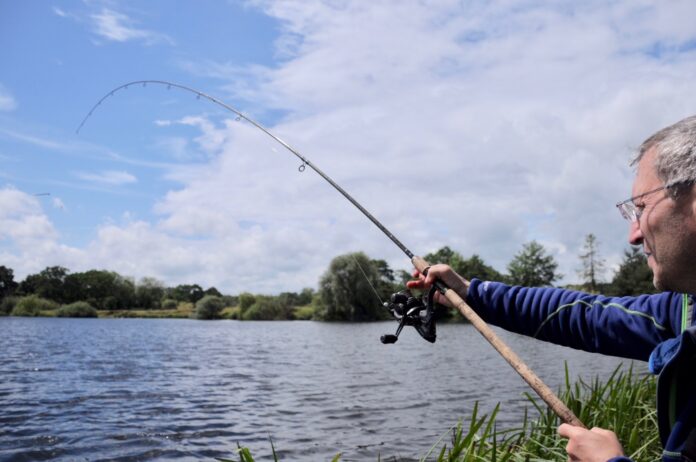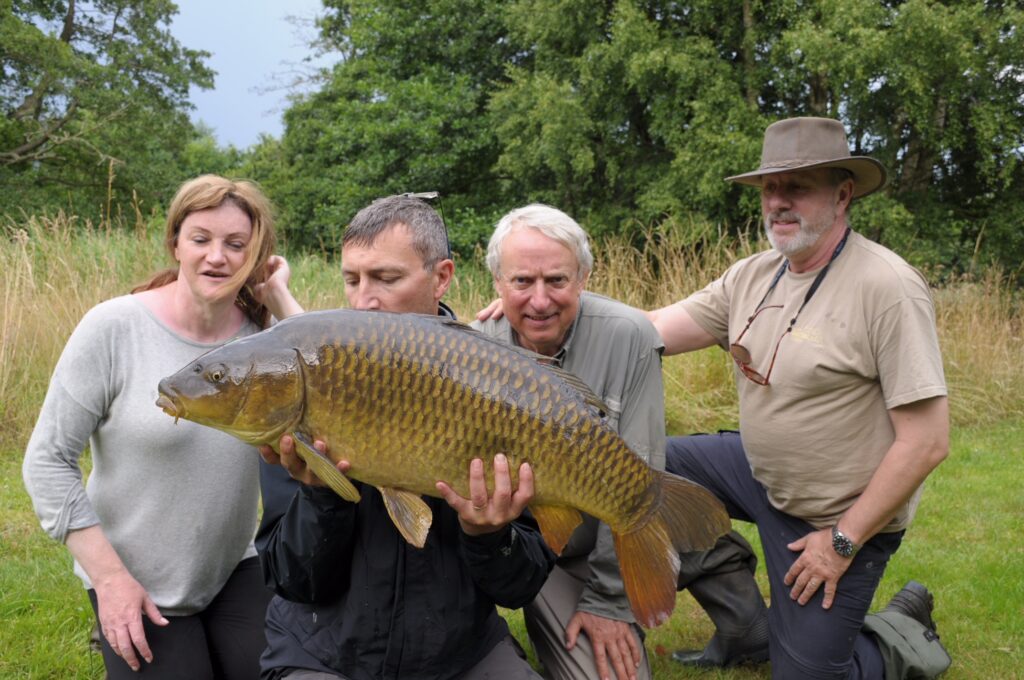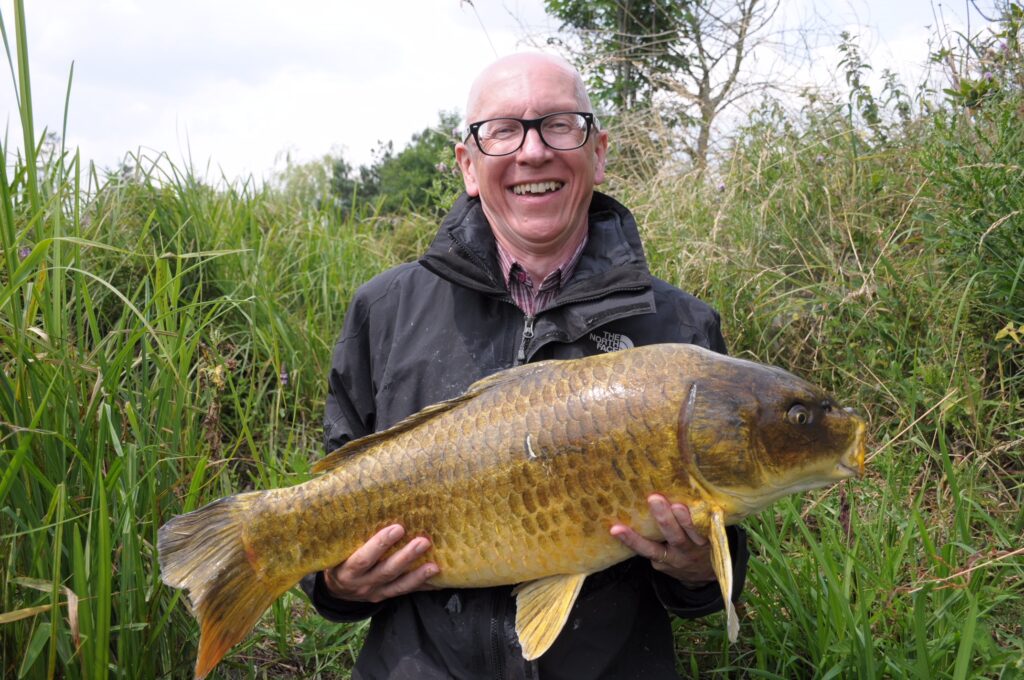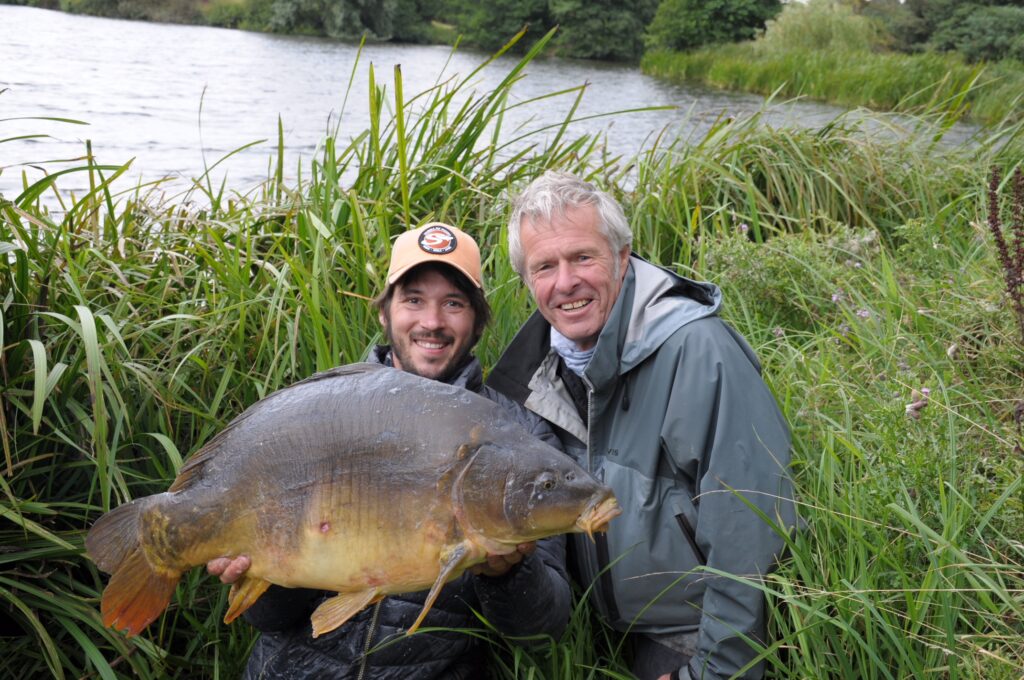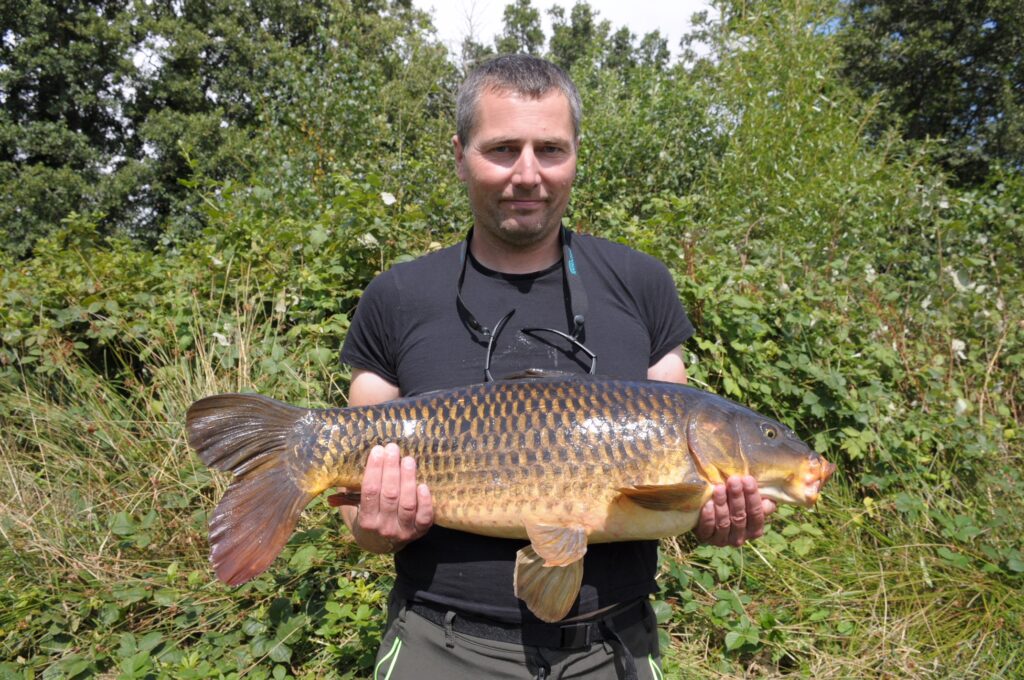CARP ON FLOAT
Float fishing is enjoying a surge of popularity amongst anglers of a certain age because it’s a “nice” way to fish, and of course fits with the “Dolly” 9 ’till 5 approach. A float isn’t much good to the carper fishing through the night when it’s dark and he/she is asleep anyway, but in daylight hours when you are on the rod, it is a good way to go. The float DOES catch carp, often with an efficiency that would shock you.
I used the phrase “on the rod” and therein lies a big issue. When I first took my guided clients after serious carp, we set out using only slightly beefed-up tench gear, which wasn’t really fair on the fish as we were playing them for too long in many situations. Watch an Acolyte try to deal with a thirty pound common and you’ll see what I mean. In the end, I found that the best outfit I could come across was a 12ft Hardy Marksman Avon, allied to a ‘pin (mostly), and 10lb mainline. The Marksman was the perfect compromise: it had the length I wanted for float control, but more guts than a dedicated float rod. The problem is that they are now hard to find and I personally haven’t found anything nearly as good… hence asking Dave Coster – what else is out there today, and John Stephenson – what might have done the job in the past? So, if you have ideas JS/DC, perhaps we could hear from you?
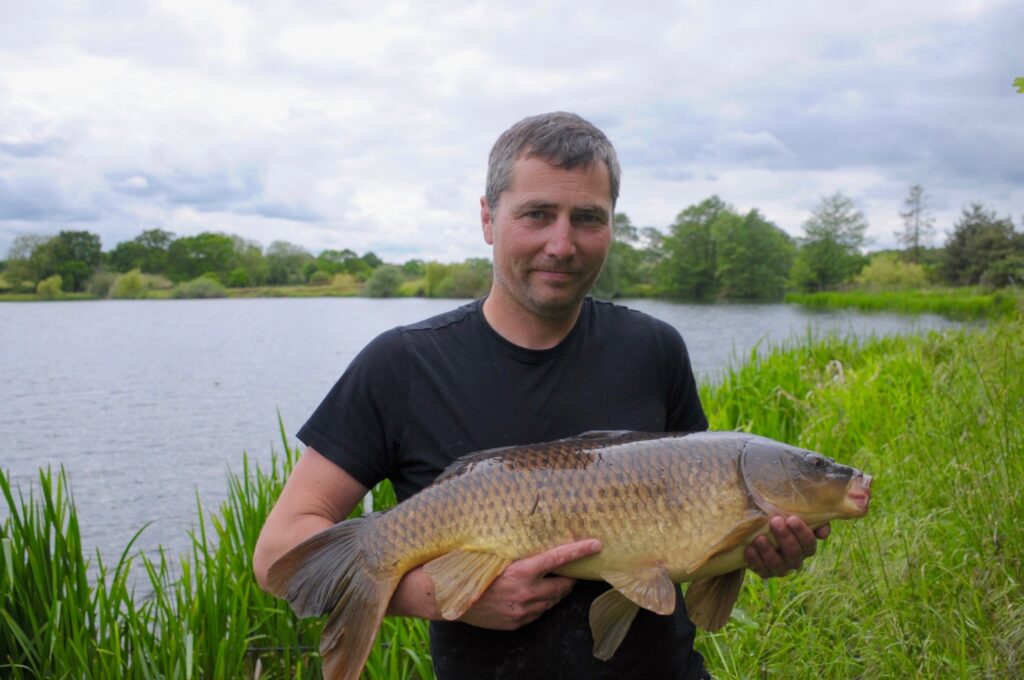

Three Bridges Farm is a delightful, small, carp syndicate lake with a good head of fish between 20 and upper 30s. It’s moderately hard, and a good carper might expect to catch a fish or two in a 24 hour session. During the 2019 season, however, we blew the lake away on float tactics. My anglers hooked 89 carp in 19 sessions which averages out at around 4.5 carp per trip. Add the fact that we were rarely there for more than five hours, and you see how successful we were. Why?
The method was simplicity itself and really only adapted from tench tactics I have discussed earlier this spring. Heavy prebaiting was good, if possible, with particles to keep the carp busy, and plenty of freebie boilies as the cherries on the cake. Baiting on the day worked nearly as well, however. Another key was to find deep water close in, and all our fish came from swims 8 to 12 feet, rarely more than two rods out.
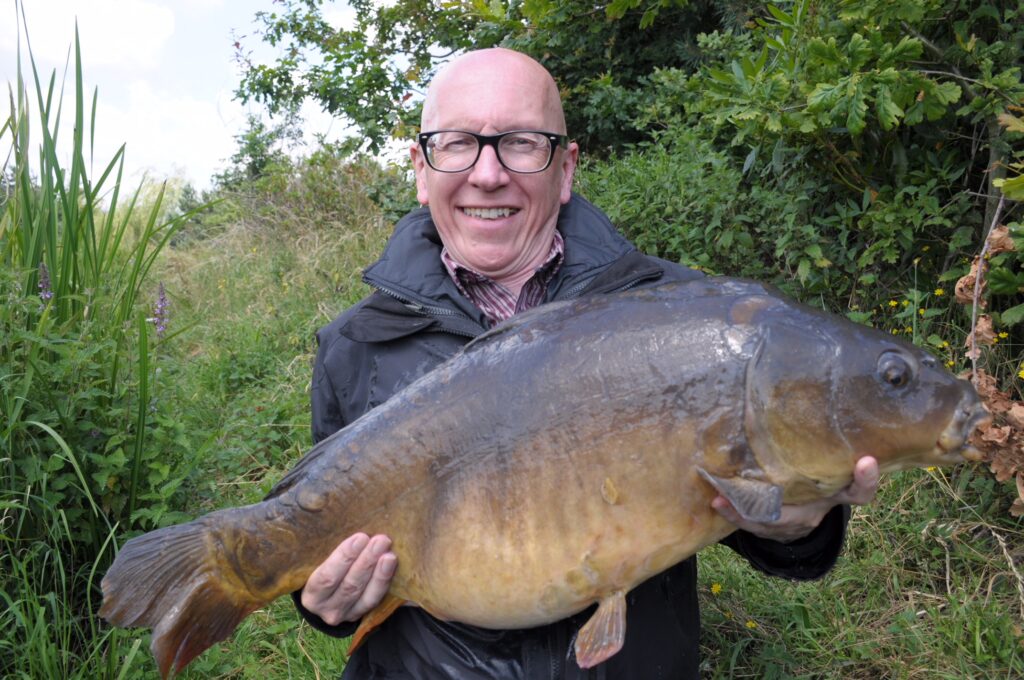

A waggler was obviously the float to use, but as small as conditions would easily allow. ALL the cocking shot was up top, locking the float in position. The float would invariably be set two feet or so overdepth so the line hung limp through the water column and there was a length of it on the lake bed. The weight of the boilie, hair-rigged of course, was enough to provide an anchor in all but the roughest of conditions. You’ll appreciate now why the 12ft rod was such a bonus, and anything shorter struggled. We obviously tried slider float combos that year but with nowhere near the success we enjoyed with a fixed float… but perhaps that was us. (The Polaris floats, BTW, caught us nothing at all!)
In effect, we were all but using freelined boilies, with a small float as an immediate indication of a take. The rig went in with virtually no fuss or damaging splash factor, and the carp felt minimal resistance when a boilie was picked up. The slack line between float and bait seemed not to bother them and, in short, it was as though the carp had no answers to the method which really slayed them for a full five months. We began catching in May and when we pulled off in September, we were still averaging a take every hour or so… compare that to the results of the carp boys and the difference was stark.
There are a few points to make. We rarely saw drastic signs of carp feeding at our feet. Perhaps a few bubbles but nothing volcanic. Silver fish sometimes sheered away as a pod of carp approached, and such a sighting would get us on extra alert. In high wind, it was sometimes necessary to go three feet over and/or add an AAA a few inches from the hook. A hooked carp would generally hang puzzled for five seconds or so before powering off unstoppably into the lake, often on a first run of eighty yards or more. The ‘pin gave wonderful, tactile control, but you needed lots of line on the drum! On a five hour session, we’d fish a half hour to see if there were carp in the swim. We’d then put in a lot of bait, half a bucket at least, and expect to wait an hour before the first fish. After that we’d simply top up and the carp would continue to appear, along with bonus tench and bream… a bonus for us, if not for the pro carpers there!
I have used Three Bridges as a prime example of where the approach works, one that has done so well for us over the years on many hard lakes up the Wensum valley. The point I am trying to make is that the float is not just an answer on small, heavily stocked, commercial-style waters. It works on tough, big pits where top carpers can sometimes struggle. The float unlocks the door for the casual carper who wants to catch big fish, in an exciting fashion, in a reasonable time span. I’m going to put up some pictures of lovely captures, not to brag, but to assure you that all were caught on the waggler, and to add weight to my words.
Dave Coster replies:
Hi John,
Like you suggest, a 12ft Avon sounds the best bet, or possibly a 12ft pellet waggler rod? There are some models geared up for long chucks and big fish, but it’s a case of shopping around for more backbone.
Best Regards, Dave










